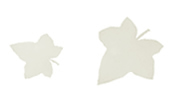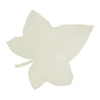


|
One of my favourite spices, Ginger is also a king [or at least a prince] of the medicinal world! It is native to Asia where it has been revered since the earliest times and is considered by many to be one of the world's best medicines. A perennial plant with lance-shaped leaves and spikes of yellow or white flowers, Ginger flourishes in fertile soil, needs plenty of rain, and grows 2 - 3 ft tall. The rhizome contains high levels of volatile oil that is warming and stimulating. During the 18th Century Ginger was added to many
remedies to modify their action and reduce irritant
effects on the stomach, or as Henry Barham put it
"taketh away their malice." This also
ties in with the Chinese practice of cooking Ginger
with potentially poisonous plants in order to reduce
their toxicity. Ginger is a circulatory stimulant which helps blood flow to the surface, making it an effective remedy for chilblains and poor circulation to the extremeties. By improving circulation and relaxing the blood vessels Ginger can also help remedy high blood pressure and arteriosclerosis. Ginger essential oil can be added to massage blends to help with circulation in the extremeties, ease stiffness and soothe sprains and rheumatic aches and pains. The essential oil is a rubefacient and should be diluted to 1% in a suitable carrier oil (sweet almond). Alternatively leave grated / sliced Ginger root and a vegetable oil (olive is a good choice for infusions as it has a long shelf life) in a glass jar to infuse for a 2 - 3 weeks in a warm place, then strain and bottle. Warm slightly before using it to massage into hands and feet or stiff, aching areas. An excellent spice for the Winter, Ginger it is warming and soothing for coughs, colds, flu and respiratory conditions and inhibits coughing. It encourages perspiration, making it useful for lowering the temperature of a fever and is also anti-inflammatory, antiseptic and antiviral in addition to being a toning herb which will help the body build up resistance.. An infusion of Ginger makes an effective gargle for sore throats, and the spice is a favourite in many seasonal drinks and recipes. Try simmering slivers of Ginger root, cinnamon sticks and bruised cloves in water for about 10 minutes, strain and drink with a dash of lemon and honey to taste. Delicious! Ginger is an effective antifungal, one of its compounds is caprylic acid which is useful for all manner of fungal infections. A decoction of Ginger root makes a good remedy for Athlete's foot - use the decoction in a foot bath or dap directly on to the affected area 2 or 3 times a day. Ginger is also antibacterial, combine this with it's antifungal action and Ginger looks like a good candidate for use in remedies for body odours. It also has a history of use for remedying dandruff - try a tablespoon of Ginger juice to 3 or 4 tablespoons of sesame oil and 1 teaspoon of lemon juice and massage into the scalp. Leave for a few minutes before washing out. In
China the fresh and dried root are used as different
remedies - the fresh being given for chills, fevers,
headaches, vomiting and aching muscles; and the
dried root uesd for internal cold and conditions
associated with a weak pulse, pale complexion and
cold hands. The dried root is also used to remedy
abdominal pains and diarrhoea. Ginger has a long folk history in Asia in the treatment of bursitis - an inflammation of the bursae (the fluid filled sacs that help lubricate the joints where muscle and tendons meet bone). In the West it is also used for treating tendonitis (inflammation of the tendons) and most likely bursitis unknowingly - as bursitis may be mistakenly diagnosed as tendonitis! In the 1800's Ginger was commonly sprinkled on top of beer or ale (and apparently stirred into the drink with a hot poker) - a forerunner to Ginger Ale? Ginger makes a wonderful addition to many culinary dishes, especially curries, and numerous sweet dishes... cakes, fruit pies, gingerbread - and you can't get a finer bisuit than a Ginger one! It's also superb as crystallised Ginger, stem Ginger in syrup or delicious Ginger beer, and makes a welcome spice addition to herbal teas or hot lemon drinks. |
|

Gaia's Garden Library
Non Fiction Section : Gaia's Garden Herblore | Susun S. Weed Articles | Articles and Musings
Fiction Section : Short Stories & Prose| As Told
By Cat | Public Domain Texts| Poetry
Shop | Library | Gallery | Forum | Contact | Links







